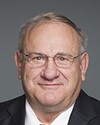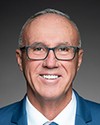As an industry, we don't present pop-ups within the log-in transaction. We all provide guidance on our online banking websites about what strong passwords are. We do proactively disable accounts if we suspect there's nefarious activity, or we've identified these credentials on the dark web or what have you. That would force a customer to go through their password reset flow and reauthenticate themselves through other means that they are legitimately who they say they are. Then we reinstate their accounts.
Evidence of meeting #155 for Public Safety and National Security in the 42nd Parliament, 1st Session. (The original version is on Parliament’s site, as are the minutes.) The winning word was data.
A video is available from Parliament.





